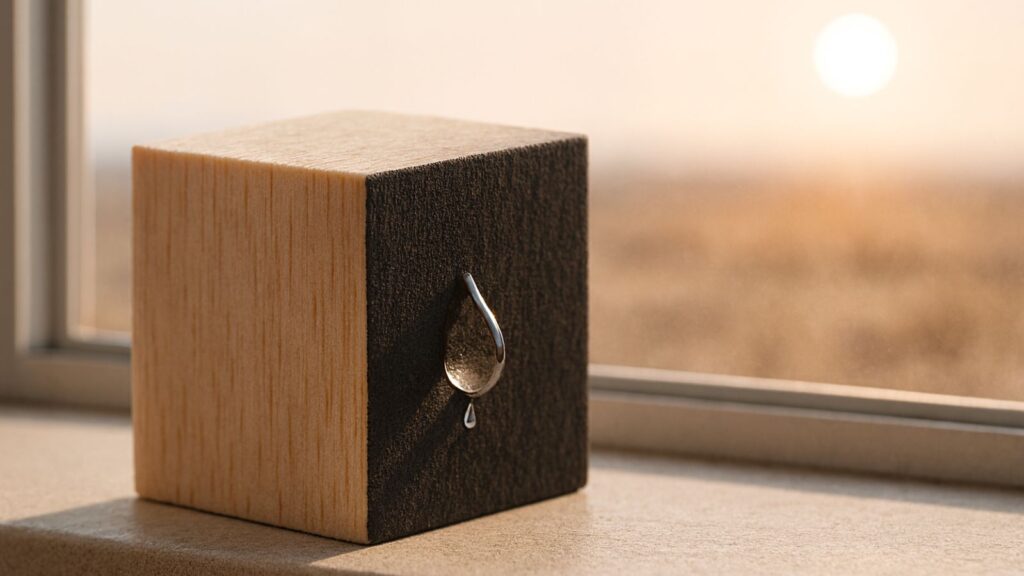The Solar-Powered Window Cube: Harvesting Drinking Water from Thin Air

AI-Generated Image for Representation
A Revolutionary Solution to Water Scarcity
Imagine a simple wooden cube, sitting on a windowsill, capable of producing clean, drinkable water from the air around it. This isn’t science fiction; it’s a real innovation from an international research team that could transform access to water for millions. In a world where water scarcity impacts over 80% of the population, this device offers a beacon of hope, operating without electricity, pipes, or moving parts.
How the Water-Harvesting Device Works
The genius of this solar-powered water generator lies in its simplicity and the clever use of natural materials. Researchers from the Royal Melbourne Institute of Technology (RMIT) and Zhejiang A&F University developed the cube using three key components:
- Processed Balsa Wood: The wood is delignified, making it soft, spongy, and highly porous. This allows it to act like a sponge, absorbing moisture from the atmosphere overnight.
- Lithium Chloride Salt: This salt is integrated into the wood, where it reacts with water molecules, enhancing the cube’s ability to absorb ambient moisture effectively.
- Carbon Nanotube Ink: One side of the cube is coated with this ink, which is responsible for capturing solar energy. It heats up rapidly when the sun rises.
The process is elegantly simple: the sponge-like wood absorbs water at night. During the day, the sun-heated carbon nanotube side causes the collected water to evaporate within the sealed cube. It then condenses into a liquid, ready to be collected as pure drinking water. The entire system is remarkably efficient, achieving a 94% success rate in converting absorbed moisture into usable water.
Performance and Scalability
This solar-powered water generator is not just a lab prototype; it has proven effective in real-world conditions. During outdoor tests:
- In humidity levels around 65-70%, the cube absorbed approximately 2.5 milliliters of water per gram of material overnight.
- It remains functional even in drier environments with humidity as low as 30%.
- A single cube weighs less than a gram, making it highly portable.
The true potential, however, lies in scalability. While one cube produces a small amount, linking multiple cubes together creates a powerful collective system. For example, nine cubes can harvest around 15 milliliters of water in a single night-cycle. This means the technology can be scaled up to meet the needs of households or even small-scale agricultural plots.
A Future Free from Thirst
The primary application for this solar-powered water generator is in providing emergency relief and supporting agriculture in secluded, water-scarce regions. It can also help regulate indoor humidity. According to Dr. Junfeng Hou of the research team, scaling production is expected to be cost-effective, as the materials are basic and the manufacturing process is straightforward.
This innovation stands as a powerful step toward a future where clean, sustainable drinking water is accessible to all, drawn directly from the air we breathe.









